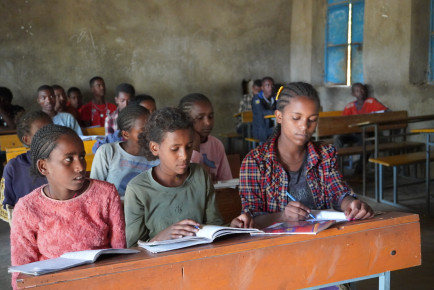Disseminating Early Warning Messages through the use of public loudspeakers in Cambodia’s provinces 📢
Published: Jan 26, 2022 Reading time: 3 minutes Share: Share an articleEarly Warning System (EWS) 1294 is one of Cambodia’s most innovative technologies, helping to keep Cambodians safe from natural disasters through the dissemination of early warning alerts. First launched in 2013, EWS1294 was developed to ensure that vulnerable communities receive timely information before natural disasters strike. Using Tepmachcha, a solar-powered, sonar-based water gauge, smart sensors continuously record information about water levels around the country. This real-time data is harnessed and transformed into early warning alerts sent out to EWS1294 mobile subscribers. Through the Interactive Voice Response (IVR) technology, EWS1294 has sent more than 2,000,000 alerts to over 125,000 subscribers nationwide. EWS1294 has also served as an additional tool against the spread of COVID-19, reminding people to follow the “3 Do’s and 3 Don’ts”.

Now, following on the success of EWS194, the National Committee for Disaster Management (NCDM) and People in Need (PIN) are working together to pilot an innovative, urban EWS in Battambang City. The aim of the project, Strengthening Climate Information and Early Warning System in Cambodia to Support Climate Resilient Development and Adaptation to Climate Change, is to ensure that Battambang’s urban population has access to an EWS by utilising last-mile communication channels. The warning messages, sourced from intergovernmental information sharing and the Tepmachha smart sensor, are broadcast as public service announcements over a public address system that uses a network of loudspeakers.
The project is financially supported by the Cambodia Climate Change Alliance (led by the National Council for Sustainable Development (NCSD) and the Ministry of Environment). The project has also received funding from the European Union, the United Nations Development Programme (UNDP), and the Government of Sweden.
Participative methods for innovative solutions
After consultations with local authorities and communities, announcements made over a public address system, through designated loudspeakers, were found to be the best option for improved flood warning dissemination in Battambang. Although Facebook and Telegram were also popular options, some communities do not have access to the Internet and thus cannot access real-time early warning information. Loudspeakers are a last-mile communication channel that can reach communities without access to smartphones or the
Internet, ensuring that early warning alerts will reach them in time, and complementing the existing EWS technology.During the workshops and focus group discussions, most people voted for public announcements made over loudspeakers as a way to widen the reach of the country’s EWS. Bunsamkaneka Chrin, Urban EWS Innovation Project Manager for PIN in Cambodia, notes: “The workshops and focus group discussions with local authorities helped us conclude that the loudspeakers would reach more people, especially those who do not have access to technology and have limited internet access.”
Utilising the existing EWS1294 platform
Linking the new Urban EWS channel to the existing EWS1294 dissemination platform enhances the system’s sustainability and performance. Flood warning messages announced through the solar-powered loudspeakers are connected to the EWS1294 platform, and will be heard by anyone within a 50-metre radius.
The EWS in Cambodia has helped thousands of families during natural disasters and the COVID-19 pandemic. With the ongoing work toward strengthening last-mile communication channels and the consistent improvements being made to the EWS, this system supports Cambodia’s aspirations of developing innovative technological solutions, saving lives, and strengthening Cambodia’s disaster management and emergency response mechanisms.
How it all works
The Tepmachcha smart sensor continuously records meteorological information and sends the data to Provincial Centres for Disaster Management (PCDMs) and the Ministry of Water Resources and Meteorology via the Cambodian cellular mobile phone network. Once the PCDMs are alerted to dangerous water levels indicating the potential for flooding, they can send flood warning messages to the mobile phones of EWS1294 subscribers in Battambang, and now, thanks to the new initiative, through the loudspeakers as well. In order to ensure the optimal performance of the speakers, PCDMs will be able to see the status of message dissemination through the loudspeakers in real-time on the EWS1294 platform.



